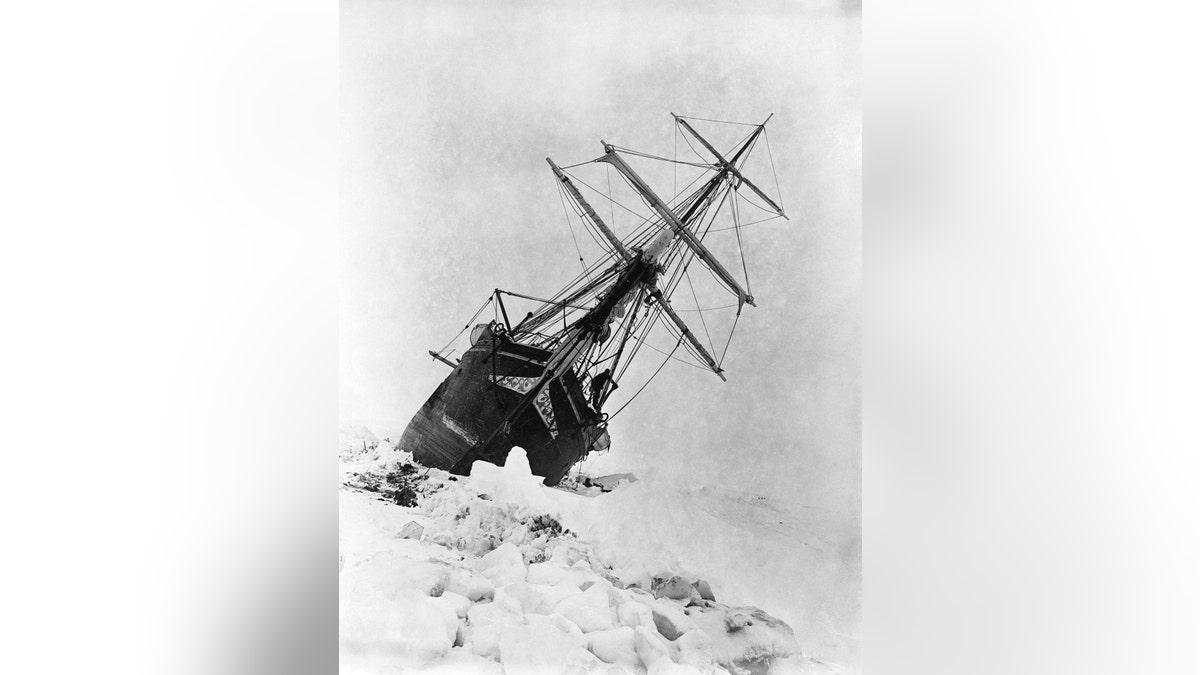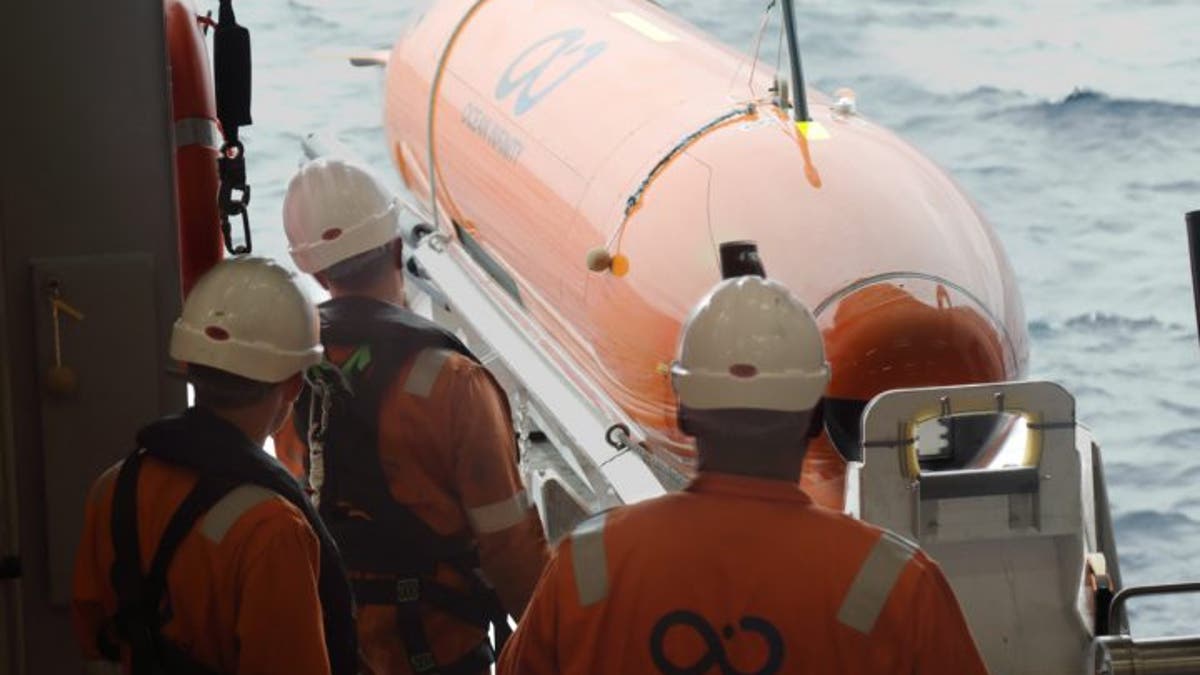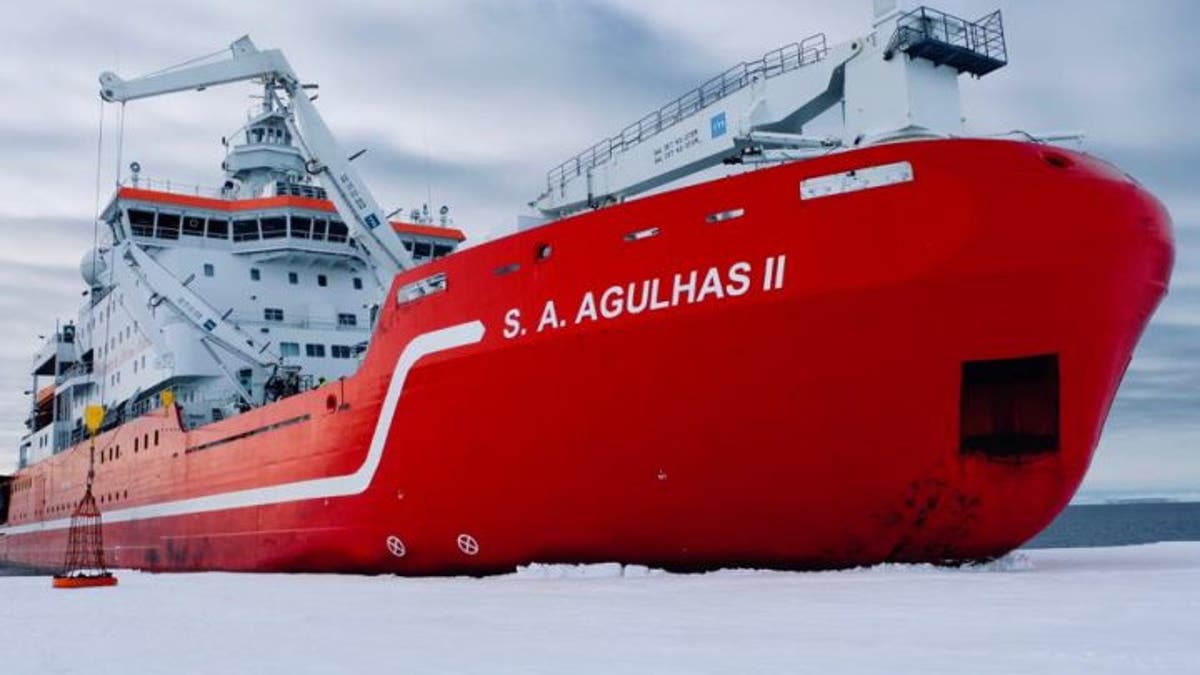
File photo - Shackleton's ship, the Endurance, as it lay locked in the Weddell Sea, where it finally sank, Antarctica, Aug. 27, 1915. The remarkable lighting was furnished by an oil fire at the bow and a great deal of flash (gun) powder. (Photo by Underwood Archives/Getty Images)
A team of scientists and archaeologists have launched an audacious attempt to find explorer Sir Ernest Shackleton’s ship Endurance, which was lost in an ice floe off Antarctica more than 100 years ago.
The expedition, which combines scientific research and marine archaeology, is using drones to explore one of the harshest environments on the planet.
The Weddell Sea Expedition will harness Autonomous Underwater Vehicles (AUVs) to locate the remains of the famous ship, which was crushed by pack ice and sank in November 1915. Shackleton’s ill-fated expedition had planned to make a land crossing of Antarctica.
DOOMED 1840S ARCTIC EXPEDITION SPARKED TALK OF A MODERN 'CURSE'
After Endurance was destroyed in the frozen wastes of the Weddell Sea her 28 crew members survived on ice floes for five months before using the ship’s lifeboats to reach Elephant Island near Antarctica. From there, Shackleton and five companions traveled 800 miles in a lifeboat to the South Atlantic island of South Georgia, where he arranged the rescue of Endurance’s remaining crew from Elephant Island. The survival and rescue of the ship’s crew are regarded as an incredible feat of human endurance.

File photo - Endurance caught between two huge ice floes - it took only 15 seconds for her to be shifted into this position. (Photo by PA Images via Getty Images)
Endurance’s Captain, Frank Worsley, carefully recorded the ship’s final coordinates before she broke up and descended below the ice. Armed with this information, members of the Weddell Sea Expedition on board the research vessel S.A. Agulhas II will send their drones under the ice to locate Endurance’s final resting place.
However, densely packed sea ice could well prevent S.A. Agulhas II from reaching the area recorded by Worsley, which means that the AUVs will play a crucial role in locating the wreck.
ENTIRE ARCTIC EXPEDITION PERISHED, BUT NOT BECAUSE OF LEAD
“The expedition team knows where to focus its search efforts and, as long as it can get close enough to the vessel, aims to deploy the free-swimming AUVs under the ice in order to try to locate it,” explains the expedition, in a statement. “The AUVs have the ability to reach sites up to one hundred miles away from the ship from which they are launched, and to return with photos and survey data.”

File photo - Ernest Shackleton's ship Endurance crushed in the pack ice of the Weddell Sea. (Photo by PA Images via Getty Images)
The expedition recently completed scientific research at the Larsen C ice shelf that made headlines in 2017 when a huge iceberg dubbed A68 broke off the ice mass. The iceberg is the size of Delaware.
“We have acquired detailed observations on the glaciology, oceanography, biology, and geology of the little known area around the Larsen C Ice shelf and the huge A68 iceberg,” said Professor Julian Dowdeswell, the expedition’s chief scientist and director of Cambridge University’s Scott Polar Research Institute, in a statement. “Analysis of this data will allow us to better understand the contemporary stability and past behaviour of Larsen C, with its wider implications for ice sheet stability more generally.”
LOST REMAINS OF EXPLORER CREDITED WITH NAMING AUSTRALIA DISCOVERED NEAR LONDON RAILWAY STATION
The expedition’s focus is now on locating the wreck of Endurance.

One of the Weddell Sea Expedition AUVs. (Weddell Sea Expedition 2019)
“We have begun transiting to the sinking site of Shackleton’s ‘Endurance’,” the expedition tweeted Monday. “As we trace the path taken in 1914/15, we feel connected to the heroic men of the Endurance that survived the harsh and remote environment of the Weddell Sea.”
On Wednesday the expedition tweeted that it was heading to King George Island off Antarctica to pick up supplies. From there, the icebreaker S.A. Agulhas II would be “heading into the pack ice.”
CLICK HERE TO GET THE FOX NEWS APP

The research vessel and icebreaker S.A. Agulhas II (Weddell Sea Expedition 2019)
Experts are intrigued by what they may find at the wreck site. In a blog post Expedition Archaeologist, Mensun Bound noted that Endurance poses a unique set of challenges. “Whereas the overwhelming majority of shipwrecks that have been studied by archaeologists are all within a depth of, say, 50 meters [164 feet], and thus reachable by people with aqualungs, the Endurance, by contrast, is 60 times deeper, at 3000 meters [9,843 feet],” he wrote. “The Endurance takes us into the archaeology of hyper-depth of which there is very little experience and thus a dearth of reliable data.”
Fox News’ Christopher Carbone contributed to this article.
Follow James Rogers on Twitter @jamesjrogers




















